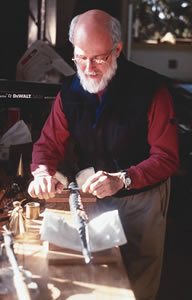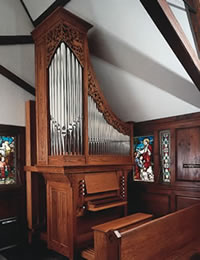 |
 |
 |
||||
 |
|
Pipe Dreams
The Cleveland-area home in which Charles Ruggles ’71 grew up was filled with the rich sounds of pipe organ music; on many nights, the family would be lulled to sleep by their father at the keys. The alluring melodies soon lit a fire in Charles, who later studied geology and organ performance at Oberlin. He took an apprenticeship with renowned organ builder John Brombaugh, whose work inspired in him a new way of thinking about the instrument: as a work of art in itself. (Brombaugh built two Oberlin organs: a two-manual organ in Kulas and a Renaissance meantone in Fairchild Chapel). Today, Ruggles is nearing his 30th year as the designer and creator of handcrafted organs that emulate the building practices of 16th through 19th-century Europe. His organs utilize a tracker action—meaning that all the connections in the organ are mechanical rather than electrical—which he says leads to better longevity, tone, and performance. Working from his Confier, Colorado, workshop, Ruggles commissions pieces for homes, churches, and universities. “When you walk into a church and look up to see this incredibly beautiful, well-proportioned instrument, you think, ‘my gosh, that must sound good too,’” he says. “The electric organ just doesn’t have that same presence.” His detail work on the instruments—autumn leaves, woodland animals, and geometric patterns—is testament to his other passion: nature. With 30 years of such craftsmanship, Ruggles has been reviewed in numerous magazines and journals, and he received the 2002 Artist Fellowship Award from the Colorado Council on the Arts.
Although Ruggles says he sometimes questions the viability of his trade—as organs become less attractive to younger church congregations—he’s not too worried about the future. “As long as there are people out there who are interested in great music and art, there will be a place for organs.” For more information, visit www.rugglesorgans.com Next Page >> |

